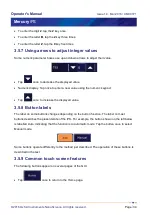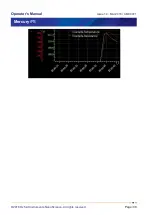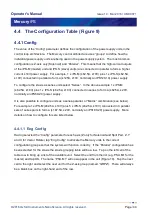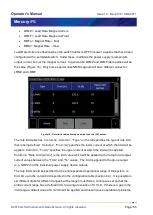
Operator's Manual
Issue 14
/
Mar 2016 / UMC0071
Mercury
iPS
©2016 Oxford Instruments NanoScience. All rights reserved.
Page
42
the coil(s) terminals, fast current transients in the coils, a large power dissipation in the coil(s)
due to resistive heating
R
coil
(
t
)*
I
coil
2
(
t
), a large rise in temperature in the coil(s) and fast
I
coil
(
t
)X
B
(
t
) stress tansients. To prevent the coils from damage and to prevent dangerously large
voltages appearing at the cryostat terminals, the coil(s) are fitted with protection circuits. These
circuits consist of power resistors and high-power diodes. The diodes prevent current leaking
through the protection circuit during normal magnet ramping and ensure that the protection
circuit only conducts when the voltage across it rises to a specified level. Design of the
protection circuit is a key part of the magnet design and quench modelling process.
The power supply will see the voltage transient at its output terminals. Once this voltage has
exceeded the voltage limit set in the configuration table for a period greater than the transient
time set in the configuration table the psu is tripped into quench mode. Initially the psu will try to
hold the voltage level by switching in the rundown resistors to dump excess current but if the
magnet has actually quenched the terminal voltage will continue to rise.
For some magnets there is a possibility that a small winding (for example a cancellation coil)
may quench but not the bulk of the magnet, the small part absorbs most of the magnet's stored
energy and causes damage to the wire. Also, damage may occur to a persistent magnet switch
if after the quench the power supply outputs a large voltage which heats up the switch while
there is no liquid helium left to cool it.
For these reasons a quench event will cause the power supply to go to zero amps.
Approximately 20 seconds after the magnet has settled at zero current, the power supply will
clamp the output and turn off the switch heater. When a quench is detected, the power supply
current will be recorded as the "Magnet Trip Current" and will appear in red in the display in the
Magnet current location as well as being recorded in the Alarms log. To clear the QUENCH
state and regain control at any time, the operator should press the HOLD button.
4.2 Slaves Detected
The Slaves detected value is the number of iPS-S units detected by the iPS-M during its boot
sequence. As the iPS system boots each slave will be booted in turn and allocated a number
“PSU.Mx” (where x=1 is the master unit, x=2 is the first slave etc) as it is discovered based on






























